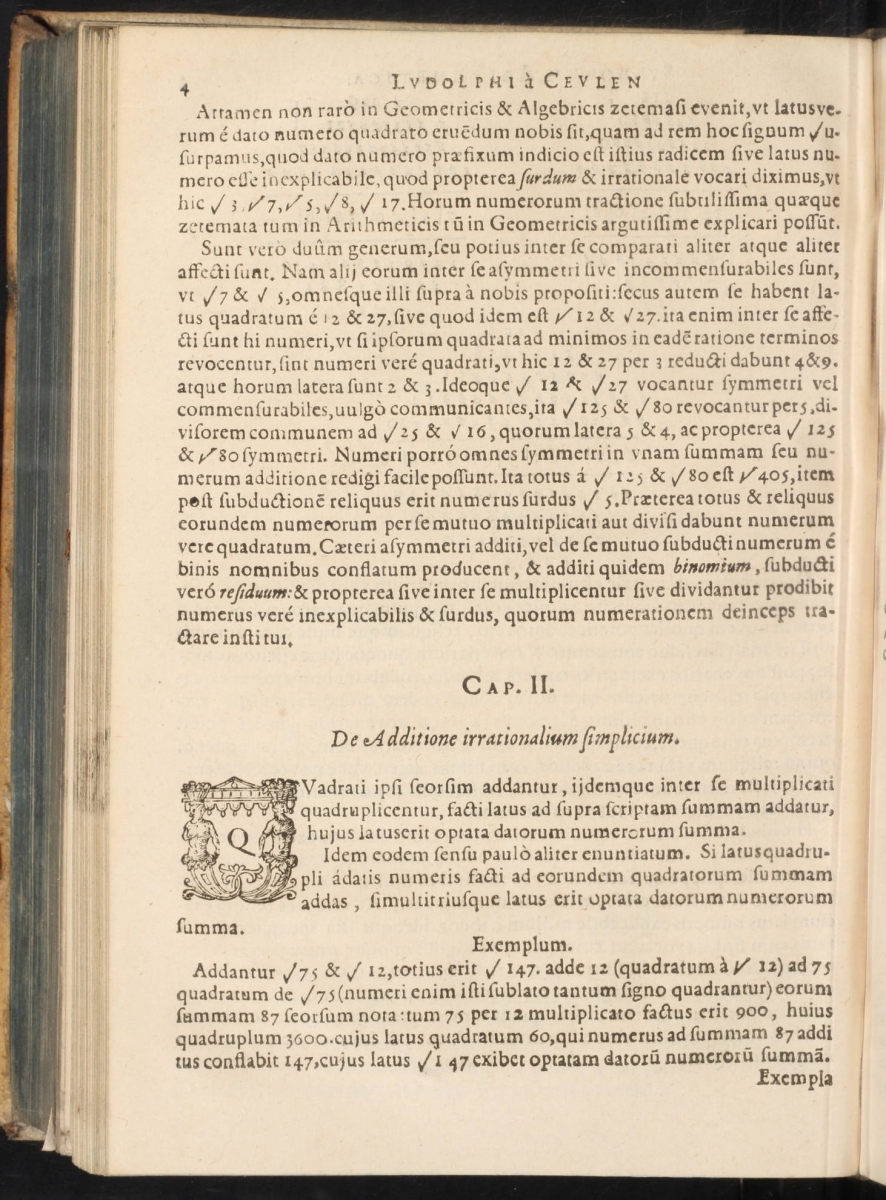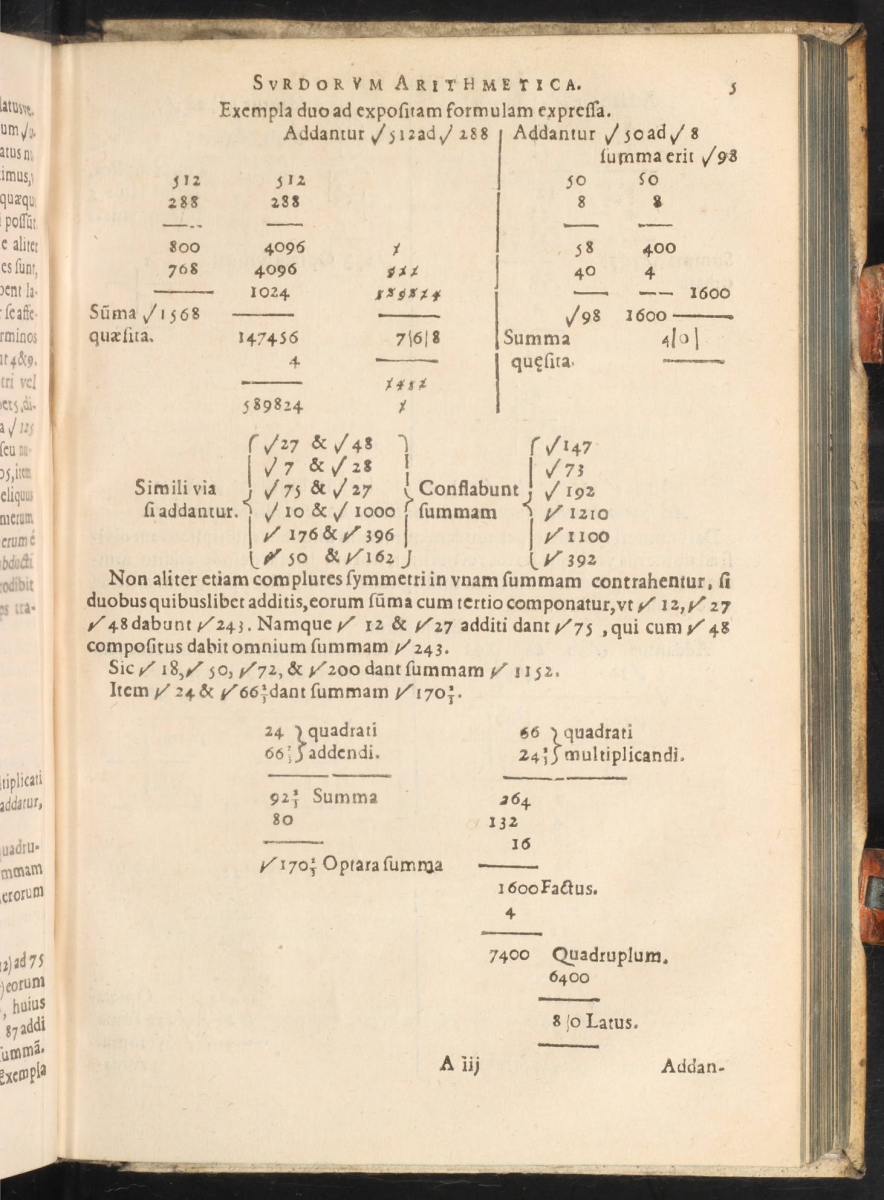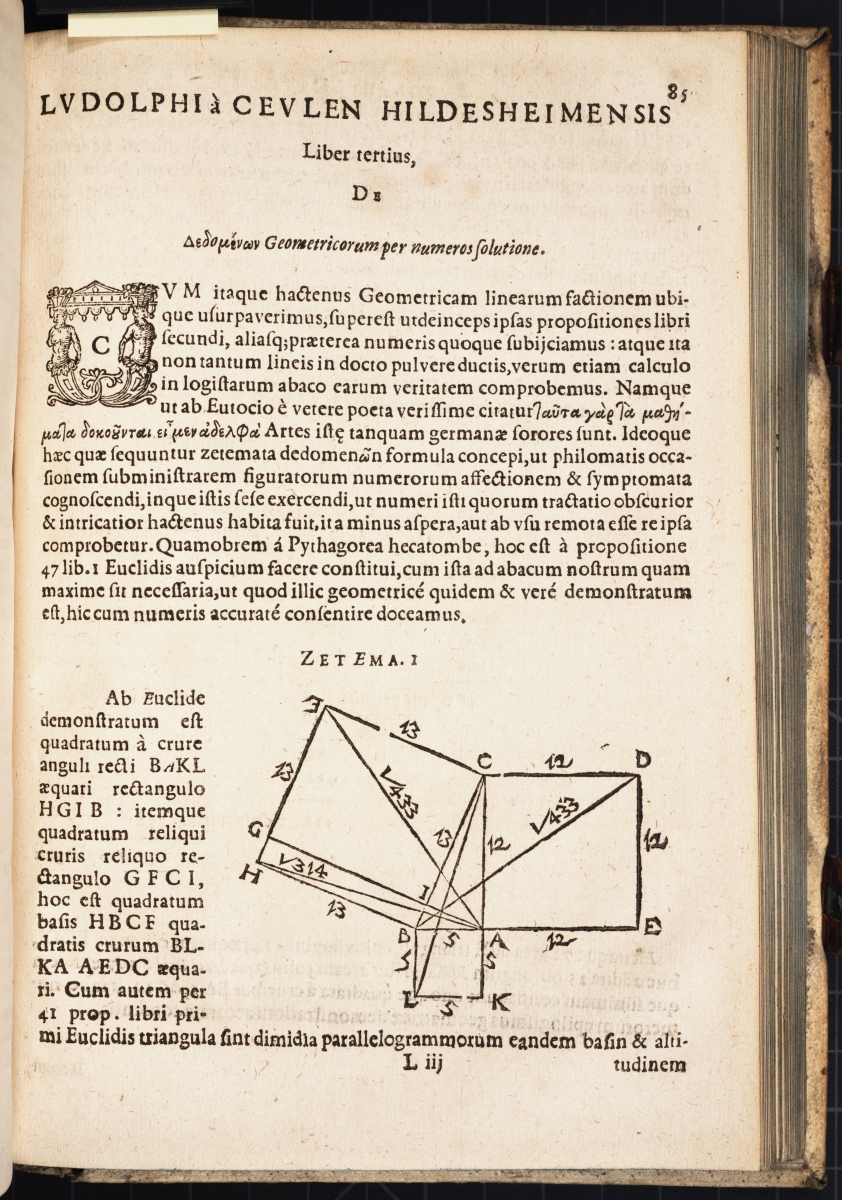- About MAA
- Membership
- MAA Publications
- Periodicals
- Blogs
- MAA Book Series
- MAA Press (an imprint of the AMS)
- MAA Notes
- MAA Reviews
- Mathematical Communication
- Information for Libraries
- Author Resources
- Advertise with MAA
- Meetings
- Competitions
- Programs
- Communities
- MAA Sections
- SIGMAA
- MAA Connect
- Students
- MAA Awards
- Awards Booklets
- Writing Awards
- Teaching Awards
- Service Awards
- Research Awards
- Lecture Awards
- Putnam Competition Individual and Team Winners
- D. E. Shaw Group AMC 8 Awards & Certificates
- Maryam Mirzakhani AMC 10 A Awards & Certificates
- Two Sigma AMC 10 B Awards & Certificates
- Jane Street AMC 12 A Awards & Certificates
- Akamai AMC 12 B Awards & Certificates
- High School Teachers
- News
You are here
Mathematical Treasure: Van Ceulen’s Surdorum quadraticorum arithmetica
Surdorum quadraticorum arithmetica (Arithmetic of Square Roots) is a work by the mathematician and fencing master Ludolph Van Ceulen (1540–1610), which was translated into Latin by his student Willebrord Snell (1580–1626). It was published after the death of Van Ceulen, along with Snell’s modification and Latin translation De Circulo of Van Ceulen’s Vanden Circkel, which was published in 1596. Images from the 1594 Dutch original Vanden Circkel are available on Convergence. Images from De Circulo are available on Convergence here and here. The last two images in the first link above for De Circulo are actually from Surdorum quadraticorum arithmetica, which was bound together with De Circulo.
The opening page of Surdorum quadraticorum arithmetica is below.

Chapter 2 is about the addition of “simple irrational numbers”, that is square roots which when simplified have a common square root factor, such as \(5\sqrt{3}\) and \(2\sqrt{3}\). However Van Ceulen does not simplify irrational square roots like we do today; for example he uses \(\sqrt{75}\) rather than \(5\sqrt{3}\). Below are images of pages 4 and 5 showing several examples of his method for adding these simple irrational numbers.


Van Ceulen’s method for adding this type of square roots is to add together the sum of the radicands with the square root of the product of the radicands multiplied by 4. The solution is the square root of this sum. His example on page 4 is to find the sum \(\sqrt{75} + \sqrt{12}\). Notice \(75+12=87\) and \(75\times 12=900\). Then the square root of \(900\times 4= 3600\) is \(60\), and \(60+87=147\). So \(\sqrt{75} + \sqrt{12}=\sqrt{147}\). Additional examples are then given on page 5, pictured above.
Upon closer inspection of the addition examples, one notices that, if simplified, they are all of the form \(a\sqrt{c} + b\sqrt{c}=(a+b)\sqrt{c}\), where \(a, b, c\) are all positive integers. So, using Van Ceulen’s non-simplified notation, the sum is of the form \(\sqrt{a^2c} + \sqrt{b^2c}\). Four times the product of the radicands is then \(4a^2b^2c^2\) which is the square of \(2abc\). Adding \(2abc\) to the sum of the original radicands yields \(a^2c + 2abc + b^2c = (a+b)^2c\). Thus, his method produces the desired sum for this special case of irrationals, \(a\sqrt{c} + b\sqrt{c}=\sqrt{a^2c} + \sqrt{b^2c}= \sqrt{a^2c + 2abc + b^2c} = \sqrt{(a+b)^2c}=(a+b)\sqrt{c}\).
Below on page 85, is a figure of the Pythagorean Theorem applied to a 5–12–13 right triangle.

A complete digital scan of Surdorum quadraticorum arithmetica is available in the Linda Hall Library Digital Collections, starting after the scan of De Circulo, which is 54 pages long. The books are bound together and assigned the call number QA33 .C481 1619.
Images in this article are courtesy of the Linda Hall Library of Science, Engineering & Technology and used with permission. The Linda Hall Library makes available all existing digital images from its collection that are in the public domain to be used for any purpose under the terms of a Creative Commons License CC by 4.0. The Library’s preferred credit line for all use is: “Courtesy of The Linda Hall Library of Science, Engineering & Technology.”
Cynthia J. Huffman (Pittsburg State University), "Mathematical Treasure: Van Ceulen’s Surdorum quadraticorum arithmetica," Convergence (June 2020)




